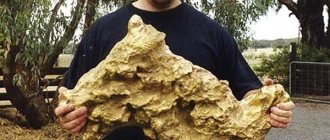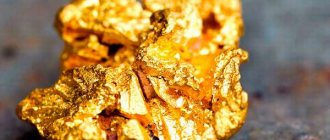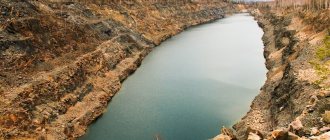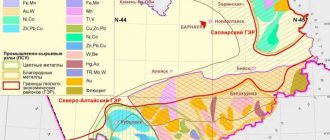The size of a fist. 10 facts about gold and nuggets of the Southern Urals. Photo: thinglink.com The Chelyabinsk region is a region rich in natural resources. The first gold veins were discovered in 1797 near Miass, but reliable information that Scythians mined metal in the Riphean Mountains (as the Urals were called in the 5th century BC) was mentioned in the works of Herodotus.
Ten facts about gold and gems - in the selection of cheltv.ru.
The biggest nugget in Russia
The size of a fist.
10 facts about gold and nuggets of the Southern Urals. Photo: sutochno.ru The largest nugget in Russia and one of the largest in the world was found in the Chelyabinsk region.
On the small river Tashkutarganka, near the city of Miass, gold was mined in the 18th century. After decades, the interest of miners in this place almost disappeared. But in 1842, a 17-year-old boy named Nikifor Syutkin discovered a cobblestone weighing 36 kilograms. When it was washed from clay and dirt, it turned out that it was a nugget.
The precious stone was called the “Big Triangle” and was given for storage to the Diamond Fund of the Russian Federation, where it is kept to this day.
Record gold plate
The officially recognized largest gold nugget in the world, the existence of which has been documented, is the Australian giant, found at the end of the 19th century. At that time, the “gold rush” that was raging on the continent was gradually coming to an end, and a few desperate gold miners continued to believe in their fortune. One of these stubborn people was a settler of German descent named Bernard Halterman. He left his homeland and moved to Australia, hoping to find a better life there.
He relied on gold mining, and for several years he unsuccessfully developed gold-bearing veins. This continued until 1871, when he began to develop a mine called Hill End. Here the gold digger smelled gold, because literally immediately he began to find the precious metal, albeit in small quantities. And already on October 19, 1872, Holterman and his partner Hugo Beyens finally stumbled upon a discovery that turned their whole lives upside down. They discovered a huge slab of gold.
This nugget was later called the "Holtermann Plate".
- Its length reached 144 centimeters.
- Width 66 centimeters.
- The thickness of the gold nugget was ten centimeters.
- This giant weighed 235.5 kilograms.
True, as scientists later found out, pure gold accounted for 83.2 kilograms in the total mass of the slab.
And the lion's share of it was quartz inclusions. Many modern scientists are inclined to believe that in fact Holterman dug up not a nugget of gold, but a massive piece of vein in which the precious metal was interspersed with inclusions of quartz. But even this reduced weight of real gold is still a record.
At the end of the 19th century, the fashion for photography flourished, and by a happy coincidence, Bernard Halterman was fascinated not only by gold mining, but also by photographs. That is why an ancient photograph has survived to this day, depicting the golden giant and its discoverer.
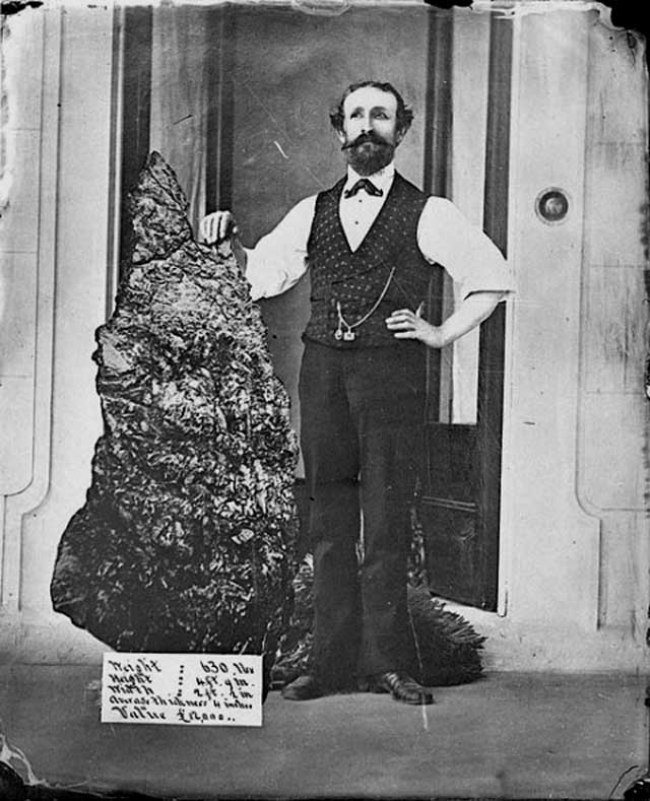
The gold miners failed to sell the giant nugget entirely. The slab has not survived to this day - it was melted down. After all, whatever one may say, Holterman was searching for gold for the sake of financial, not sporting interest.
Golden Lake

10 facts about gold and nuggets of the Southern Urals. Interesting facts about gold and gems. Photo: yatakviju.mirtesen.ru Lake Inyshko, next to Turgoyak, is considered one of the most “golden”. True, no nuggets were found there, but, according to legend, at its bottom lies the treasure of Emelyan Pugachev. There is a version that the rebel ordered a couple of barrels of gold to be drowned in a pond when he was leaving his pursuers. The problem is that the peat and silt make the lake bottom so muddy and dark that looking for anything there is like looking for a needle in a haystack.
Welcome Stranger

“The Welcome Stranger” is one of the largest gold nuggets found in Australia by prospectors John and Richard in one of the private mining mines. The weight of a piece of precious metal is almost 70 kilograms. The mass of the nugget was so large that there were no scales in the village to weigh it and determine the exact weight. A piece of ore was divided into several parts and sent to England. There it was melted down into the largest bar of gold and placed in a public bank in London.
First diamonds
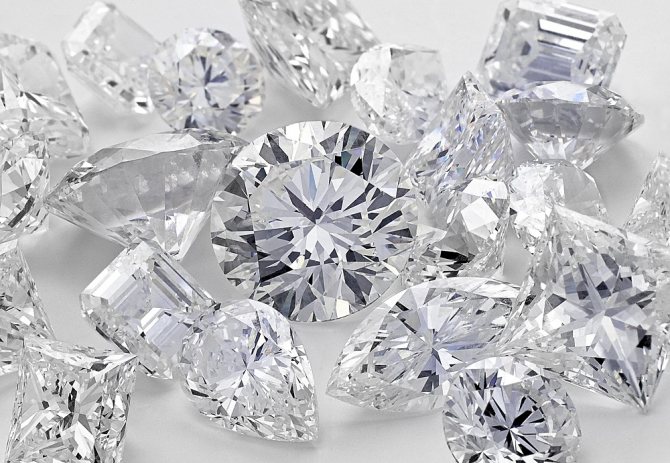
10 facts about gold and nuggets of the Southern Urals. Interesting Facts. Photo: funart.pro There are diamonds in the Southern Urals. Before the Revolution, about 300 of these most durable and expensive stones in the world were found in the Chelyabinsk region. At that time, few people knew that crystals are very fragile. The mineral was placed on an anvil and hit with a hammer, it simply crumbled into dust - and people thought that it was not a diamond.
Chemical and physical characteristics
Gold belongs to the platinum group metals. It does not oxidize under the influence of oxygen, maintaining its structure and appearance. It is a very dense and heavy metal. Due to its softness and plasticity, it is widely used in the production of jewelry and gold leaf plates for the domes of Orthodox churches. The color of the metal changes depending on the impurities that predominate in it. The most common elements are silver and copper. The presence of copper gives a reddish tint, and the presence of silver gives a pale yellow color.
History of origin and deposit
There are several theories about the origin of gold on Earth. The most likely hypothesis involves the presence of metal in the matter that formed the planet. This explains the uniform distribution of metal over the surface, the presence of gold-bearing sand and nuggets. According to scientists, the metal is formed in the bowels of the earth under the influence of colossal pressure and high temperatures. Its release to the surface is explained by earthquakes and volcanic activity of the planet.
It is mined on all continents except Antarctica. The richest deposits are located in Russia and Australia. According to the mechanism of formation, the amount of extracted raw materials and technological processes, deposits are primary and secondary.
Indigenous or primary formations appear in mountainous areas after volcanic eruptions and the release of magma to the surface. Quartz veins contain large amounts of gold in the form of tiny grains. The amount of precious metal is determined by the following factors:
- chemical composition of the rock;
- magma freezing time;
- weather conditions and atmospheric influences;
- conditions and intensity of eruptions;
- geological and physical nuances.
Primary development came about as a result of technological advances in the twentieth century, allowing humans to penetrate deep into the earth's crust. Geological studies have shown that there are rich gold-bearing veins in the depths.
The nature of secondary deposits is due to the destruction of barren or semi-barren rocks that contain gold. This is due to the influence of the following physical and chemical processes:
- abundance of groundwater;
- precipitation;
- temperature changes;
- vital activity of microorganisms.
In coastal areas, gold placers can appear as a result of the washing away of solid formations and their gradual transformation into sand. Gold is an inert and heavy metal that does not react with other chemical compounds. Due to this, it accumulates in any relief irregularities, bottom sediments, shores of lakes and rivers. Placer deposits are located close to the surface under a thick layer of waste rock.
A distinctive feature of secondary deposits is the possibility of metal migration and the formation of new deposits. The process is facilitated by natural changes in the landscape with the emergence of root gold-bearing deposits to the surface.
Types of native metal
There are two types of native gold found in nature : placer metal and nuggets. Placer metal grains have several advantages over nuggets. Unprocessed particles in placers do not require additional processing to separate them from the main ore. Therefore, small grains represent the purest product.
The extraction of nuggets is associated with difficulties due to their deep occurrence in the subsoil and the search for deposits. In addition, the mined metal must be purified from the minerals in which it is located. These are solid formations weighing more than 5 grams. Nuggets come in various shapes and sizes.
The “Devil’s Ear” gold nugget weighing 6.66 kg was found in the Irkutsk region
baikal24.ru
A large gold nugget was found at one of the deposits in the Bodaibinsky district of the Irkutsk region. Its weight is 6664 grams, which allows it to be included in the list of the largest gold nuggets discovered in the entire history of gold mining in this area baikal24.ru
A large gold nugget was found at one of the deposits in the Bodaibinsky district of the Irkutsk region. Its weight is 6664 grams, which allows it to be included in the list of the largest gold nuggets discovered in the entire history of gold mining in the area, according to the local administration website.
A rare find was made by gold miners at Ugakhan LLC. It is noteworthy that this happened on Friday, June 13th. It is curious that the devices that sift out the precious metal from debris and pebbles initially made a mistake and mistook the nugget for a stone, throwing it into the screening. The nugget was discovered by a worker who was leveling the rejected rock.
Considering the date of the discovery and the shape of the nugget, which resembles a pointed ear, the prospectors immediately named the nugget “Devil’s Ear.” The team is not afraid of bad reception and considers the find the best gift for the birthday of the gold mining enterprise - on June 14, Ugakhan LLC turned 14 years old.
In addition, prospectors are hoping for the old saying that nuggets don’t come alone, and perhaps very soon the “Devil’s Ear” will have a “brother.”
As People.su notes, assigning names to large nuggets is an old tradition. The very first large nugget in world history is mentioned in ancient Arab chronicles. It was discovered in the 11th century on the territory of modern Afghanistan and, according to scientists, when translated into modern measurements, it weighed approximately 2-2.5 tons.
In one of the many historical books it was stated that in Brazil in the middle of the 19th century they found a nugget whose mass was neither more nor less, but as much as 200 kilograms. Historians have been trying to find it for quite some time and still can’t. Most of them are inclined to think that this is just a fiction. Already in modern times such large nuggets have not been found.
To date, the largest gold nugget is considered to be the “Holtermann Plate,” which was found in 1872 in Australia. In this nugget, a piece of quartz weighing more than 250 kilograms has accumulated as much as 93 kilograms of pure gold.
Australia is generally the leader in the number of finds of such large nuggets. For example, in 1869, a nugget was discovered almost on an ordinary country road, which is now called the “Welcome Stranger”; part of the gold mass in it is about 70 kg.
In 1857, in the same Australia, the “Brilliant Barkley” nugget was discovered, the weight of which also turned out to be not small - 54 kilograms.
Japan was also lucky with large nuggets. Although there are practically no large gold deposits on the territory of this country, in 1901 the Japanese nugget was found here, weighing 71 kilograms.
In the USA in 1954, a gold nugget weighing 36 kilograms was found, named “Oliver Martin”. He was discovered while digging a grave.
The very first large nugget in Russia, which is also the largest in the country, is the one that was found in 1842 in the Urals. It was called the “Big Triangle” because of its corresponding shape. The weight of the “Big Triangle” is 36 kilograms.
In Soviet times, one of the largest was the “Big Tyelginsky” nugget, its weight is 14 kilograms, and it was found in 1936 in the Chelyabinsk region. In addition, there is another one - the “Golden Giant”, it has an identical weight, and it was found in the Magadan region in 1961. In 1990, a nugget weighing about 12 kilograms was discovered, which was called “April”.
